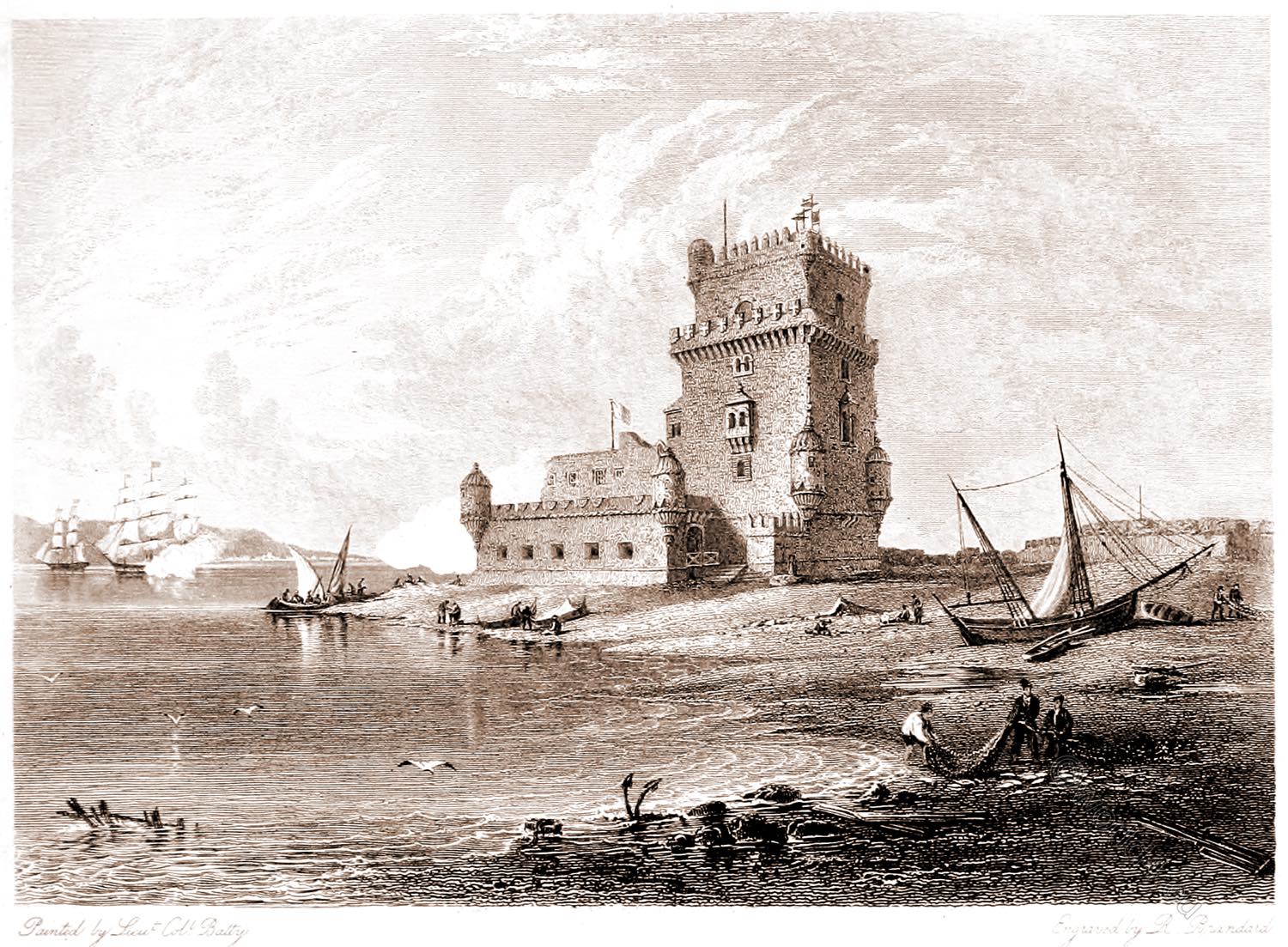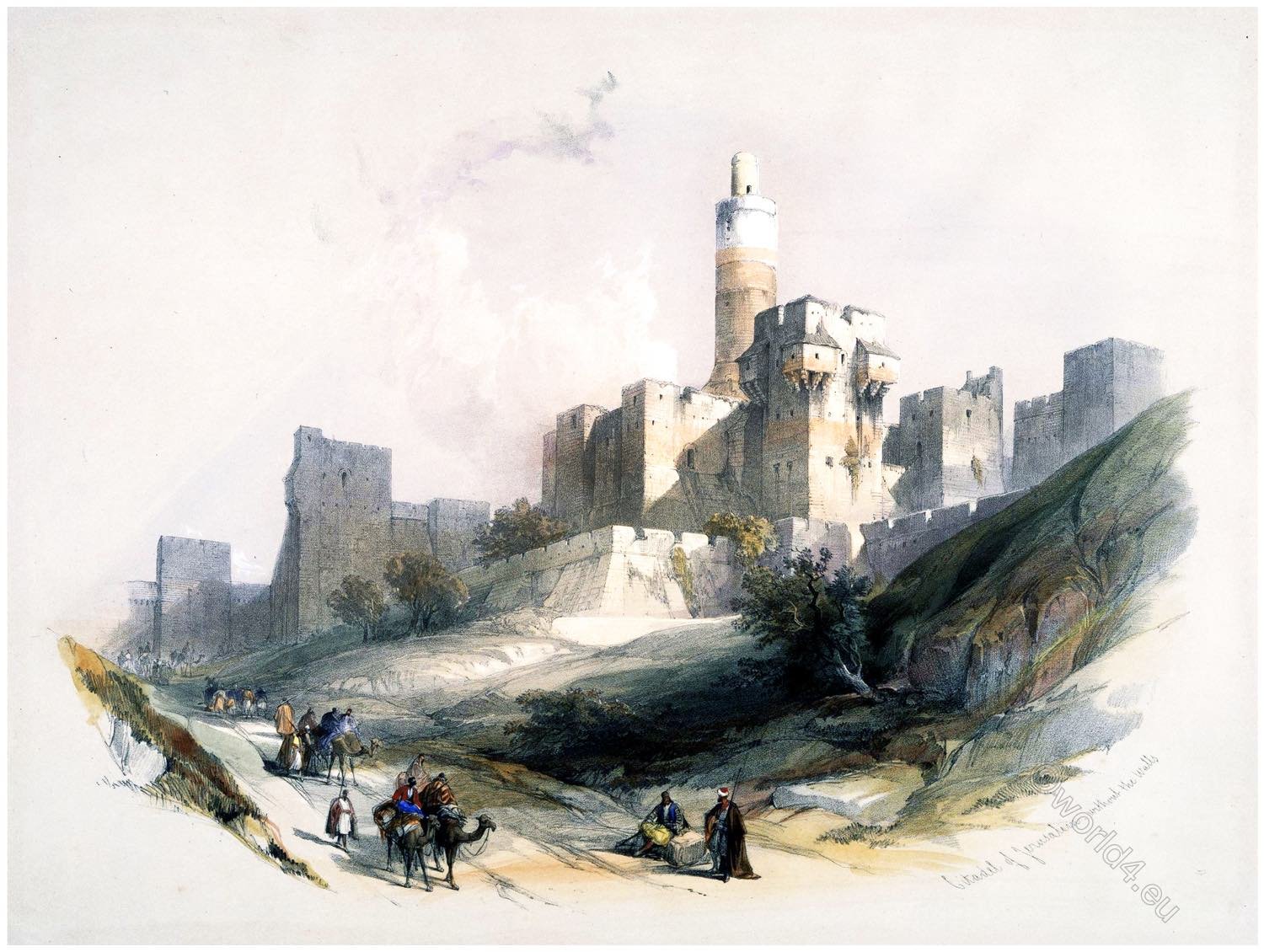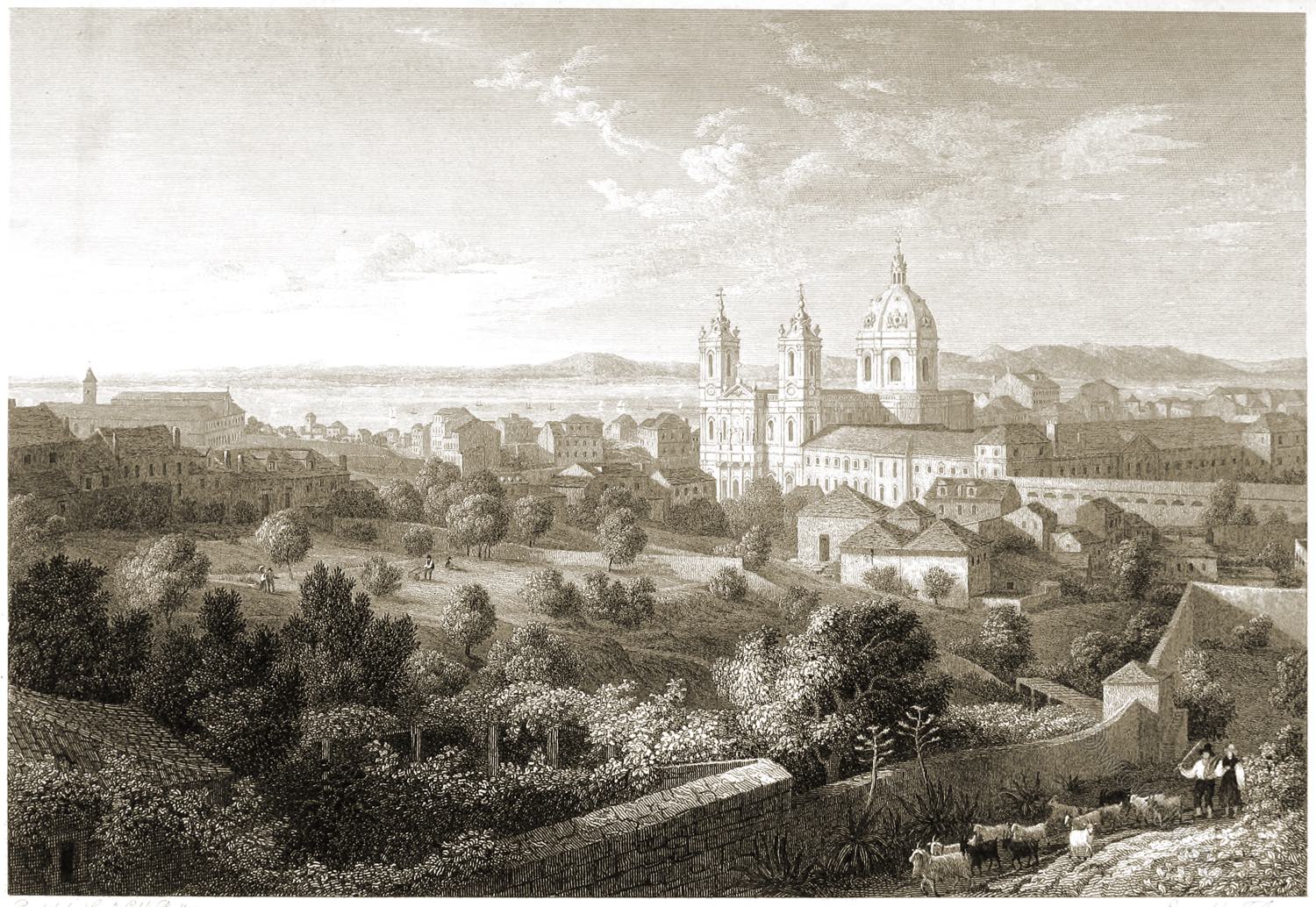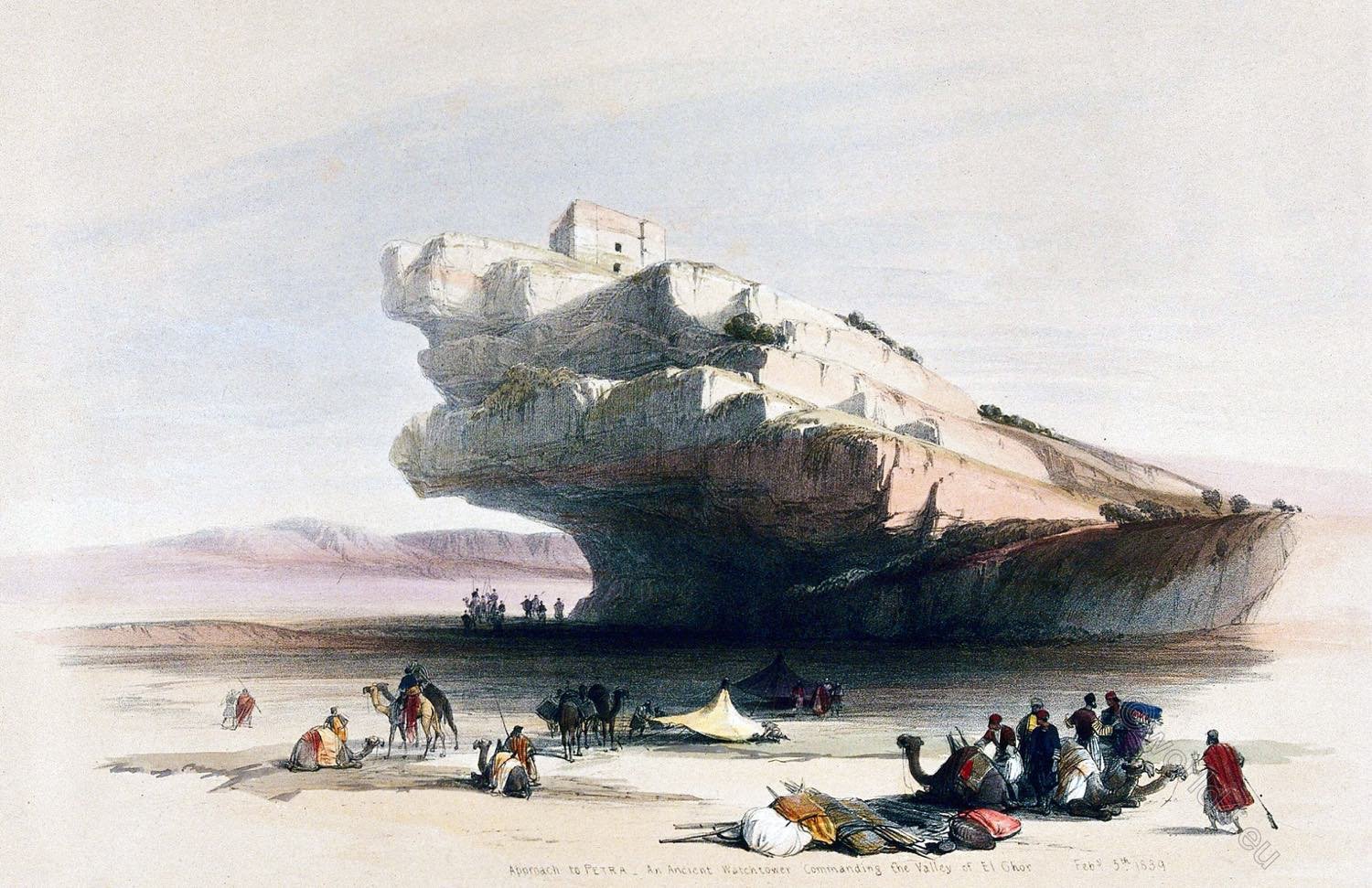
Belém Tower. Tower of Saint Vincent
The Torre de Belém in the Belém district at the mouth of the River Tejo is one of Lisbon’s most famous landmarks. Along with the nearby Mosteiro dos Jerónimos, the tower is one of the few outstanding buildings of the Manueline style that survived the Lisbon earthquake of 1755. The top, 35-metre-high, exposed floor of the tower is now a viewing platform.
It symbolises the heyday of the Portuguese maritime and trading empire. Situated as a lighthouse on a rock in the mouth of the Tagus, it greeted the arriving explorers and merchant ships. Originally there was a second tower on the opposite side. Enemy ships could thus be caught in the crossfire. However, this twin tower was destroyed by the great earthquake of 1755.
LISBON. BELEM CASTLE.
VIGNETTE.
On entering the Tagus, and passing the forts of St. Julian and of Bugio, situated respectively at the extremities of its northern and southern shores, we obtain a view of Lisbon crowning the hills on the north bank, about three leagues distant above the mouth of the river. Basking under a glowing and pure atmosphere, its appearance is most brilliant, exciting a lively interest, which increases as we glide nearer and nearer to it with the flowing tide.
The quintas or villas scattered over the country, between the villages, become more numerous the farther we advance; till at length, on approaching Belem, an uninterrupted chain of edifices is seen extending along the margin of the noble river, to the remotest part of the ancient capital, being a distance of full six miles.
The new royal palace of Nossa Senhora d’Ajuda stands on the brow of a lofty hill, commanding magnificent prospects over the whole surrounding scene. It is of gigantic proportions, and, when completed, will form one of the most sumptuous palaces in Europe. On the bank of the Tagus below is the celebrated Convent of St. Geronymo; and a little farther to the west is the Castle, or, as it is usually called, the Torre de Belem.
Opposite to this point, and on the southern shore of the Tagus, is the small fort of Torre Velha. These two forts, situated at the narrowest part of the river below Lisbon, guard the approach to the capital by sea; and all vessels arriving at its port have their papers examined at the Torre de Belem. The salutes of ships of war are in like manner answered by its guns.
Belem Castle consists chiefly of a handsome quadrangular tower, with turrets at the angles on its summit, and with similar flanking turrets at the angles of its first tier. It is built of stone, and is curiously ornamented with carved mouldings. The two lower tier of battlements represent shields, on which the Maltese cross is carved in relief. It was built at the commencement of the sixteenth century, in the reign of Don Manoel. In the annexed view the spectator is supposed to be looking to the south-west, obliquely across the Tagus towards the little fishing town of Traffaria, which is seen on the southern shore in the distance.
Source: Select views of some of the principal cities of Europe by Robert Batty. London: Moon, Boys, and Graves, 1832.
Continuing
LISBON.
Belem Castle (Vignette).
Convent of St. Geronymo, Belem.
Lisbon, from the Rua de San Miguel.
Lisbon, from the Chapel Hill of Nossa Senhora da Monte.
Lisbon. The Largo do Pelourinho.






